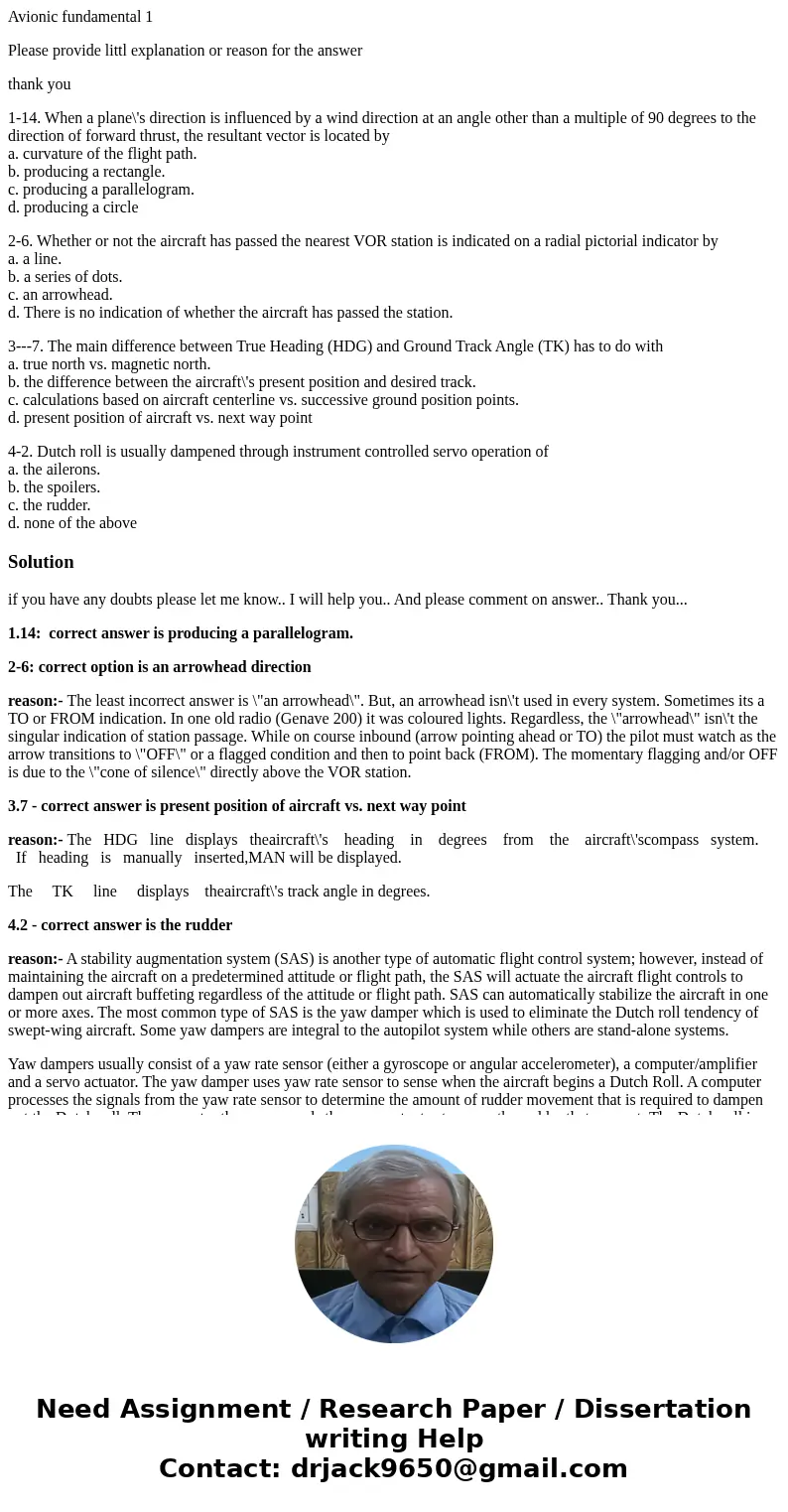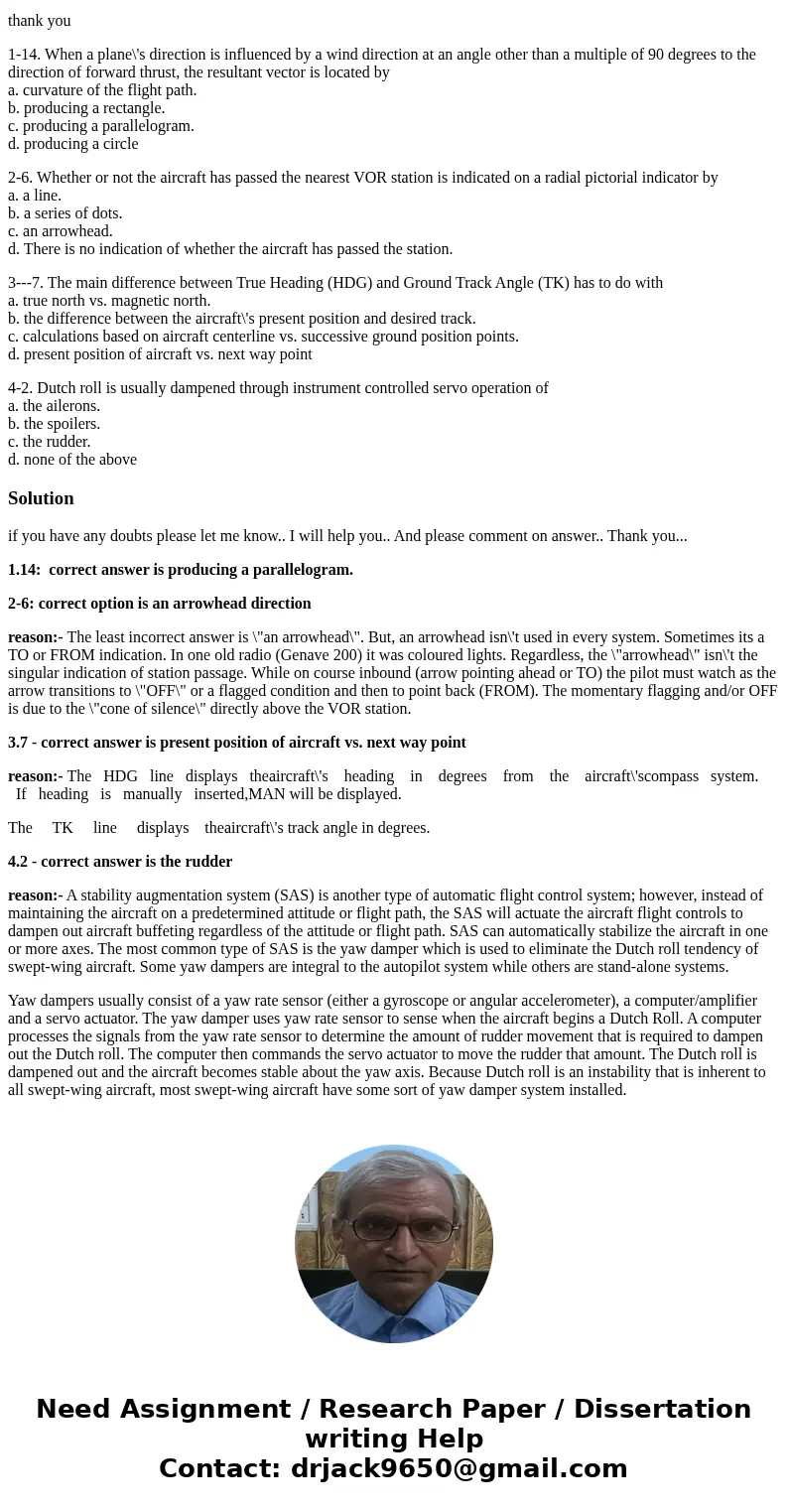Avionic fundamental 1 Please provide littl explanation or re
Avionic fundamental 1
Please provide littl explanation or reason for the answer
thank you
1-14. When a plane\'s direction is influenced by a wind direction at an angle other than a multiple of 90 degrees to the direction of forward thrust, the resultant vector is located by
a. curvature of the flight path.
b. producing a rectangle.
c. producing a parallelogram.
d. producing a circle
2-6. Whether or not the aircraft has passed the nearest VOR station is indicated on a radial pictorial indicator by
a. a line.
b. a series of dots.
c. an arrowhead.
d. There is no indication of whether the aircraft has passed the station.
3---7. The main difference between True Heading (HDG) and Ground Track Angle (TK) has to do with
a. true north vs. magnetic north.
b. the difference between the aircraft\'s present position and desired track.
c. calculations based on aircraft centerline vs. successive ground position points.
d. present position of aircraft vs. next way point
4-2. Dutch roll is usually dampened through instrument controlled servo operation of
a. the ailerons.
b. the spoilers.
c. the rudder.
d. none of the above
Solution
if you have any doubts please let me know.. I will help you.. And please comment on answer.. Thank you...
1.14: correct answer is producing a parallelogram.
2-6: correct option is an arrowhead direction
reason:- The least incorrect answer is \"an arrowhead\". But, an arrowhead isn\'t used in every system. Sometimes its a TO or FROM indication. In one old radio (Genave 200) it was coloured lights. Regardless, the \"arrowhead\" isn\'t the singular indication of station passage. While on course inbound (arrow pointing ahead or TO) the pilot must watch as the arrow transitions to \"OFF\" or a flagged condition and then to point back (FROM). The momentary flagging and/or OFF is due to the \"cone of silence\" directly above the VOR station.
3.7 - correct answer is present position of aircraft vs. next way point
reason:- The HDG line displays theaircraft\'s heading in degrees from the aircraft\'scompass system. If heading is manually inserted,MAN will be displayed.
The TK line displays theaircraft\'s track angle in degrees.
4.2 - correct answer is the rudder
reason:- A stability augmentation system (SAS) is another type of automatic flight control system; however, instead of maintaining the aircraft on a predetermined attitude or flight path, the SAS will actuate the aircraft flight controls to dampen out aircraft buffeting regardless of the attitude or flight path. SAS can automatically stabilize the aircraft in one or more axes. The most common type of SAS is the yaw damper which is used to eliminate the Dutch roll tendency of swept-wing aircraft. Some yaw dampers are integral to the autopilot system while others are stand-alone systems.
Yaw dampers usually consist of a yaw rate sensor (either a gyroscope or angular accelerometer), a computer/amplifier and a servo actuator. The yaw damper uses yaw rate sensor to sense when the aircraft begins a Dutch Roll. A computer processes the signals from the yaw rate sensor to determine the amount of rudder movement that is required to dampen out the Dutch roll. The computer then commands the servo actuator to move the rudder that amount. The Dutch roll is dampened out and the aircraft becomes stable about the yaw axis. Because Dutch roll is an instability that is inherent to all swept-wing aircraft, most swept-wing aircraft have some sort of yaw damper system installed.


 Homework Sourse
Homework Sourse